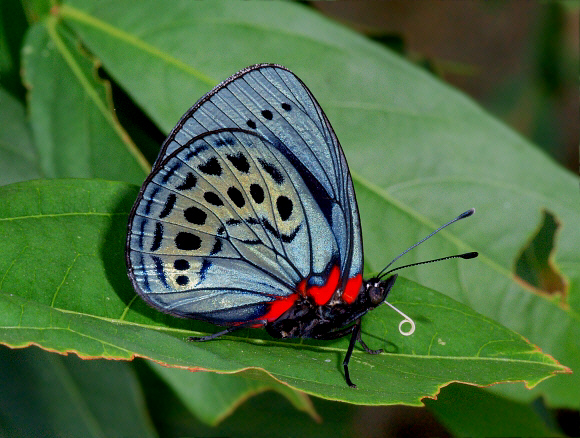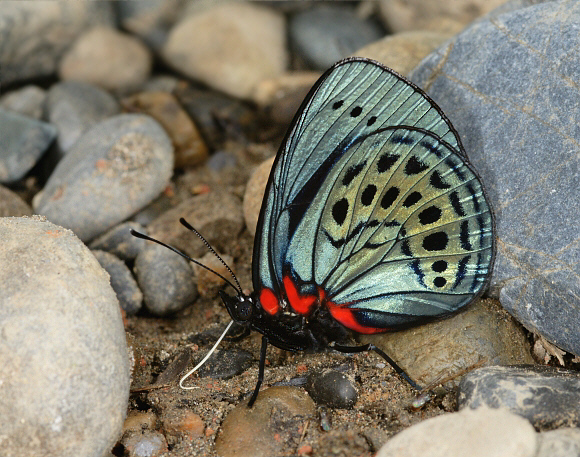 Asterope leprieuri, Pantiacolla, Madre de Dios, Peru – Adrian Hoskins
Asterope leprieuri, Pantiacolla, Madre de Dios, Peru – Adrian Hoskins
Introduction
There are 7 species in the genus Asterope, which was formerly known as Callithea.
All are characterised by having metallic bluish or greenish undersides marked with a similar pattern of black spots, and red or orange markings near the base of the wings. In some species including degandii, buckleyi and certain races of leprieuri these bright patches extend to cover the inner two-thirds of the hindwing area.
On the upper surface the wings are black, with metallic greenish areas near the apex, and a deep blue sheen across the entire wing area that is dazzling when the butterflies are in flight. Some species such as batesii, markii and hewitsoni and sapphira also have patches of bright orange on the upperside.
Males of leprieuri have a very large patch of dark androconial scales at the base of the upperside fore-wings. Both sexes, in common with other Asterope species have large spatulate tips to the antennae, and white proboscises.
Asterope species are distributed widely across the Amazonian region, with leprieuri being found from Colombia to Brazil and Bolivia.
 Asterope leprieuri, Pantiacolla, Madre de Dios, Peru – Adrian Hoskins
Asterope leprieuri, Pantiacolla, Madre de Dios, Peru – Adrian Hoskins
Habitats
This species is found in primary rainforest at altitudes between sea level and about 1000 metres, east of the Andes.
Lifecycle
Unknown.
Adult behaviour
I have not observed females of this species.
Males are solitary in behaviour. They are usually seen in hot and slightly rocky places such as open areas beside Andean roads, or on the upper part of rocky or pebble strewn sandbanks, where they imbibe mineralised moisture through their distinctive white proboscises.
They are easily disturbed, and at such times immediately fly up to settle on the foliage of trees, usually at a height of about 3-5 metres. From these vantage points they survey their surroundings until any perceived threat has passed. Before returning to ground level they invariably make a reconnaissance flight, circling rapidly and widely several times at a height of about 4-5 metres to make sure that “the coast is clear”, and then resettling very close to their original feeding place.
